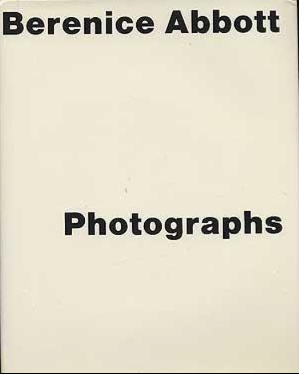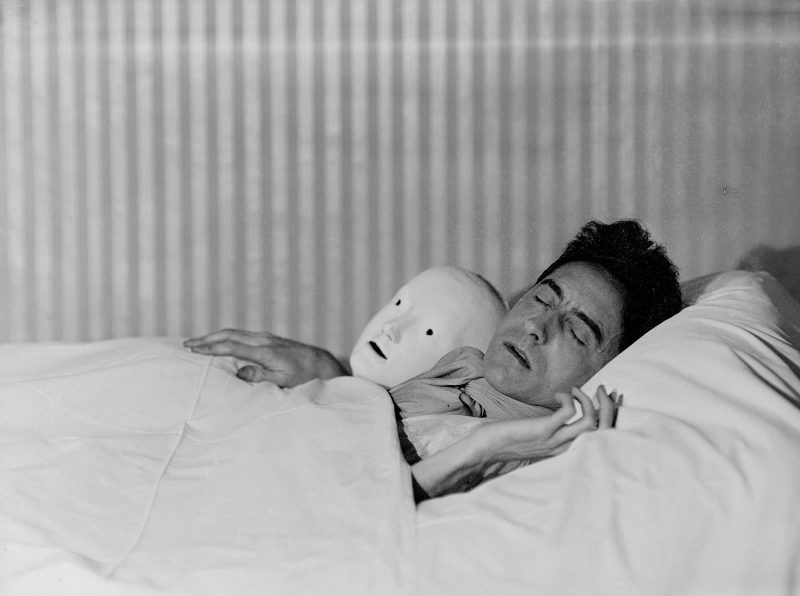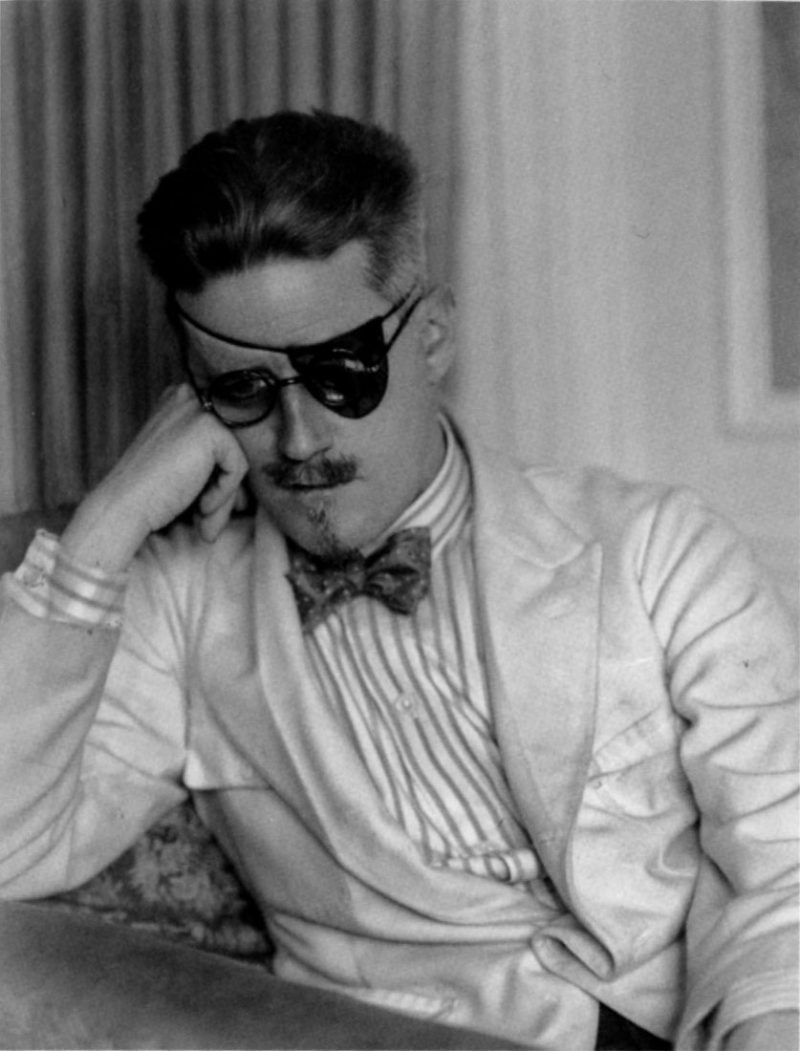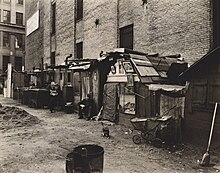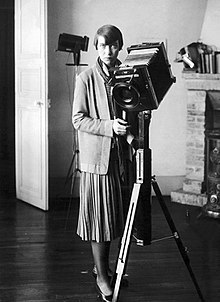SOLD ‘Berenice Abbott Photography Book 1970
Title: Berenice Abbott : Photographs
Publisher: Horizon Press, New York
Binding: Softcover
Book Condition: Good
Forward by Muriel Rukeyser / Introduction by David Vestal
First Edition. 175 pages. Measures 8.5 inches width x 11 inches height.
Includes (Faces of the Twenties – New York – Science). Chronology, exhibitions, bibliography.
A copy that has been read, but remains in good condition. All pages are intact, and the cover is intact with signs of aging/mild yellowing. The spine may show signs of wear. Pages can include limited notes ( names of writers, poets, artists written by hand).
Berenice Abbott (July 17, 1898 – December 9, 1991), née Bernice Alice Abbott, was an American photographer best known for her portraits of between-the-wars 20th century cultural figures, New York City photographs of architecture and urban design of the 1930s, and science interpretation in the 1940s to 1960s.
Early years
Abbott was born in Springfield, Ohio and brought up there by her divorced mother, née Lillian Alice Bunn (m. Charles E. Abbott in Chillicothe OH, 1886).
She attended Ohio State University for two semesters, but left in early 1918 when her professor was dismissed because he was a German teaching an English class. In Paris, she became an assistant to Man Ray, who wanted someone with no previous knowledge of photography.
Trip to Europe, photography, and poetry.
Her university studies included theater and sculpture. She spent two years studying sculpture in Paris and Berlin. She studied at the Académie de la Grande Chaumiere in Paris and the Prussian Academy of Arts in Berlin. During this time, she adopted the French spelling of her first name, “Berenice,” at the suggestion of Djuna Barnes. In addition to her work in the visual arts, Abbott published poetry in the experimental literary journal transition. Abbott first became involved with photography in 1923, when Man Ray hired her as a darkroom assistant at his portrait studio in Montparnasse. Later, she wrote: “I took to photography like a duck to water. I never wanted to do anything else.” Ray was impressed by her darkroom work and allowed her to use his studio to take her own photographs. In 1921 her first major works was in an exhibition in the Parisian gallery Le Sacre du Printemps. After a short time studying photography in Berlin, she returned to Paris in 1927 and started a second studio, on the rue Servandoni.

Abbott’s subjects were people in the artistic and literary worlds, including French nationals (Jean Cocteau), expatriates (James Joyce), and others just passing through the city. According to Sylvia Beach, “To be ‘done’ by Man Ray or Berenice Abbott meant you rated as somebody”. Abbott’s work was exhibited with that of Man Ray, André Kertész, and others in Paris, in the “Salon de l’Escalier” (more formally, the Premier Salon Indépendant de la Photographie), and on the staircase of the Théâtre des Champs-Élysées. Her portraiture was unusual within exhibitions of modernist photography held in 1928–1929 in Brussels and Germany.
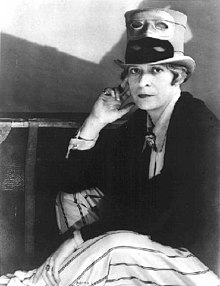
In 1925, Man Ray introduced her to Eugène Atget‘s photographs. She became interested in Atget’s work, and managed to persuade him to sit for a portrait in 1927. He died shortly thereafter. She acquired the prints and negatives remaining in Eugène Atget’s studio at his death in 1927. While the government acquired much of Atget’s archive — Atget had sold 2,621 negatives in 1920, and his friend and executor André Calmettes sold 2,000 more immediately after his death — Abbott was able to buy the remainder in June, 1928, and quickly started work on its promotion. An early tangible result was the 1930 book Atget, photographe de Paris, in which she is described as photo editor. Due to a lack of funding, Abbott sold a one-half interest in the collection to Julien Levy for $1,000. Abbott’s work on Atget’s behalf would continue until her sale of the archive to the Museum of Modern Art in 1968. In addition to her book The World of Atget(1964), she provided the photographs for A Vision of Paris (1963), published a portfolio, Twenty Photographs, and wrote essays. Her sustained efforts helped Atget gain international recognition.
Changing New York

In early 1929, Abbott visited New York City, ostensibly to find an American publisher for Atget’s photographs. After New York when she was doing portrait photography most of the time, she moved on to documentary photography. Upon seeing the city again, Abbott recognized its photographic potential. She went back to Paris, closed up her studio, and returned to New York in September. She was a central figure that created bridge with photographic hubs in New York City. Her first photographs of the city were taken with a hand-held Kurt-Bentzin camera, but soon she acquired a Century Universal camera which produced 8 × 10 inch negatives. Using this large format camera, Abbott photographed New York City with the diligence and attention to detail she had so admired in Eugène Atget. Atget died in 1927 and she bought all his work which contained over 5000 negatives and glass slides from him and brought it to New York in 1929. Her work has provided a historical chronicle of many now-destroyed buildings and neighborhoods of Manhattan. Her work appeared in an exhibition “Changing New York” at the Museum Of City in 1937. This was a book made to show the transformation of New York City. She focused more on the physical part of the transformation rather than the mental part of it, such as the change of neighborhoods and the replacement of skyscrapers to low rise buildings.
Abbott worked on her New York project independently for six years, unable to get financial support from organizations (such as the Museum of the City of New York), foundations (such as the Guggenheim Foundation), or individuals. She supported herself with commercial work and teaching at the New School of Social Research beginning in 1933.
In 1935, Abbott was hired by the Federal Art Project (FAP) as a project supervisor for her “Changing New York” project. She continued to take the photographs of the city, but she had assistants to help her both in the field and in the office. This arrangement allowed Abbott to devote all her time to producing, printing, and exhibiting her photographs. By the time she resigned from the FAP in 1939, she had produced 305 photographs that were then deposited at the Museum of the City of New York. Abbott’s project was primarily a sociological study embedded within modernist aesthetic practices. She sought to create a broadly inclusive collection of photographs that together suggest a vital interaction between three aspects of urban life: the diverse people of the city; the places they live, work and play; and their daily activities. It was intended to empower people by making them realize that their environment was a consequence of their collective behavior (and vice versa). Moreover, she avoided the merely pretty in favor of what she described as “fantastic” contrasts between the old and the new, and chose her camera angles and lenses to create compositions that either stabilized a subject (if she approved of it), or destabilized it (if she scorned it).
Abbott’s ideas about New York were highly influenced by Lewis Mumford‘s historical writings from the early 1930s, which divided American history into a series of technological eras. Abbott, like Mumford, was particularly critical of America’s “paleotechnic era”, which, as he described it, emerged at end of the American Civil War, a development called by other historians the Second Industrial Revolution. Like Mumford, Abbott was hopeful that, through urban planning efforts (aided by her photographs), Americans would be able to wrest control of their cities from paleotechnic forces, and bring about what Mumford described as a more humane and human-scaled, “neotechnic era”. Abbott’s agreement with Mumford can be seen especially in the ways that she photographed buildings that had been constructed in the paleotechnic era—before the advent of urban planning. Most often, buildings from this era appear in Abbott’s photographs in compositions that made them look downright menacing.
In 1935, Abbott moved into a Greenwich Village loft with the art critic Elizabeth McCausland, with whom she lived until McCausland’s death in 1965. McCausland was an ardent supporter of Abbott, writing several articles for the Springfield Daily Republican, as well as for Trendand New Masses (the latter under the pseudonym Elizabeth Noble). In addition, McCausland contributed the captions for the book of Abbott’s photographs entitled Changing New York which was published in 1939. In 1949, her photography book Greenwich Village Today and Yesterday was published by Harper & Brothers.
Ralph Steiner wrote in PM that Abbott’s work was “the greatest collection of photographs of New York City ever made.”
Beyond New York City
In 1934 Henry-Russell Hitchcock asked Abbott to photograph two subjects: antebellum architecture and the architecture of H. H. Richardson. Two decades later, Abbott and McCausland traveled US 1 from Florida to Maine, and Abbott photographed the small towns and growing automobile-related architecture. The project resulted in more than 2,500 negatives.
Shortly after the trip, Abbott underwent a lung operation. She was told she should move from New York City due to air pollution. She bought a rundown home in Blanchard, Maine, along the banks of the Piscataquis River for US$1,000. Later, she moved to nearby Monson and remained in Maine until her death in 1991. Most of her work is shown in the United States, but a couple photographs are shown in Europe.
Abbott’s work in continued in Maine. Her last book was A Portrait of Maine (1968).
Approach to photography
Abbott was part of the straight photography movement, which stressed the importance of photographs being unmanipulated in both subject matter and developing processes. She also disliked the work of pictorialists who had gained much popularity during a substantial span of her own career and, therefore, left her work without support from this particular school of photographers. Most of Abbott’s work was influenced by her unhappy and lonely childhood. This gave her the strength and determination to follow her dreams.
Throughout her career, Abbott’s photography was very much a display of the rise in development of technology and society. Her works documented and praised the New York landscape. This was all guided by her belief that a modern-day invention such as the camera deserved to document the 20th century.
Scientific work
Abbott was not only a photographer, but also founded the corporation, “House of Photography,” from 1947 to 1959, to develop, promote and sell some of her inventions. She stayed with scientific pictures for twenty years until she died.[22] She has a famous quote saying “the world is made my science”.[34] Her works were displayed the rise of development of technology when she created scientific photographs her scientific photos became a hit within two weeks of her releasing them. These included a distortion enlarging easel, which created unusual effects on images developed in a darkroom, and the telescopic lighting pole, known today by many studio photographers as an “autopole,” to which lights can be attached at any level. Owing to poor marketing, the House of Photography quickly lost money, and with the deaths of two designers, the company closed.
Abbott’s style of straight photography helped her make important contributions to scientific photography. From 1958 to 1960, she produced a series of photographs for a high-school physics textbook, developed by the Physical Science Study Committee project based at MIT to improve secondary school physics teaching. Her work included images of wave patterns in water and stroboscopic images of moving objects, such as Bouncing ball in diminishing arcs, which was featured on the cover of the textbook. She contributed to the understanding of physical laws and properties of solids and liquids though her studies of light and motion. Between 1958 and 1961 she made a series of photographs for Educational Services Inc. was circulated by them and the Smithsonian Institution as an exhibition titled Image of Physics. In 2012, some of her work from this era was displayed at the MIT Museum in Cambridge, Massachusetts.
Personal life
The film Berenice Abbott: A View of the 20th Century, which showed 200 of her black and white photographs, suggests that she was a “proud proto-feminist”; someone who was ahead of her time in feminist theory. Before the film was completed she questioned, “The world doesn’t like independent women, why, I don’t know, but I don’t care.” She identified publicly as a lesbian.
She lived with her partner, art critic Elizabeth McCausland, for 30 years.
Abbott’s life and work are the subject of the 2017 novel The Realist: A Novel of Berenice Abbott, by Sarah Coleman.
